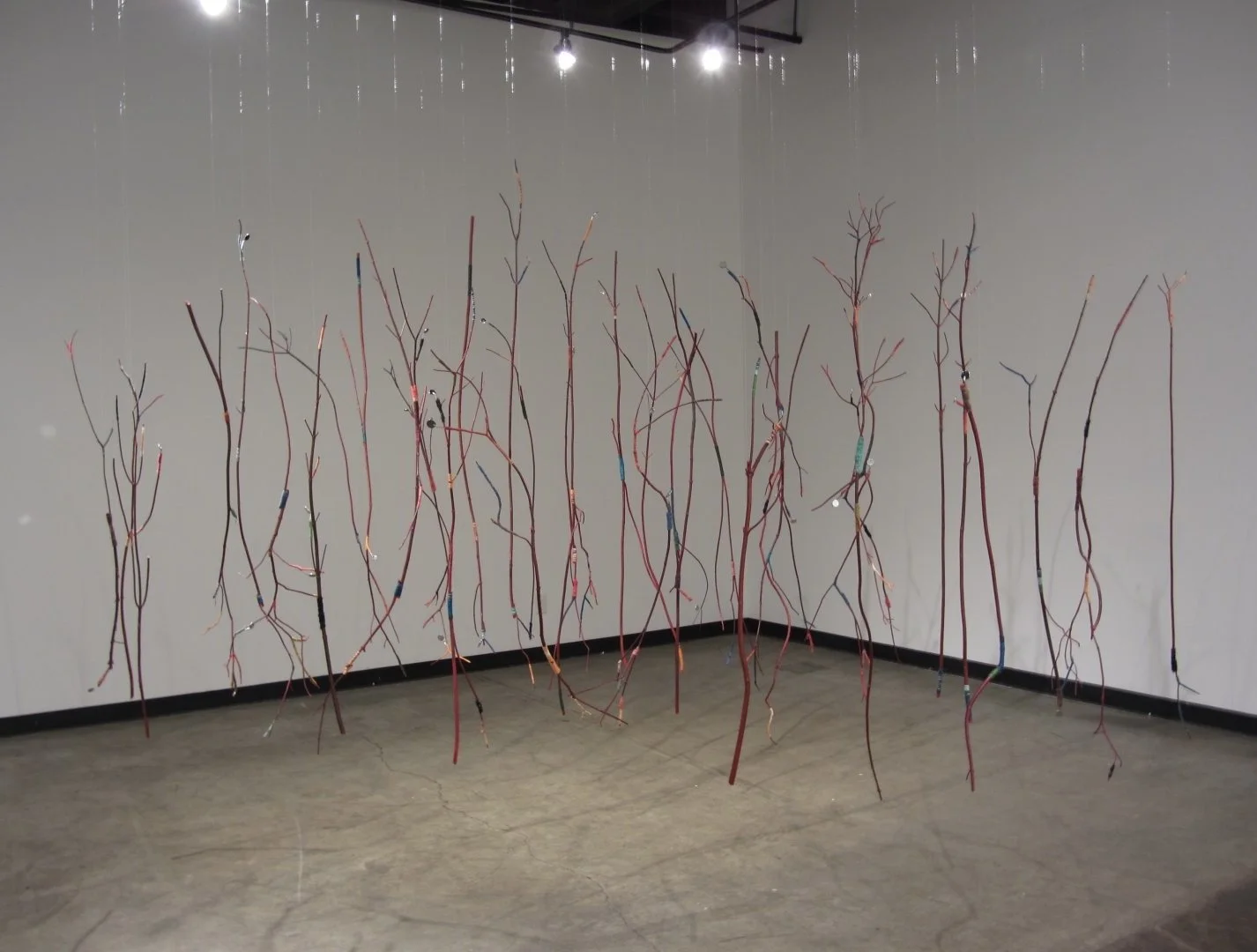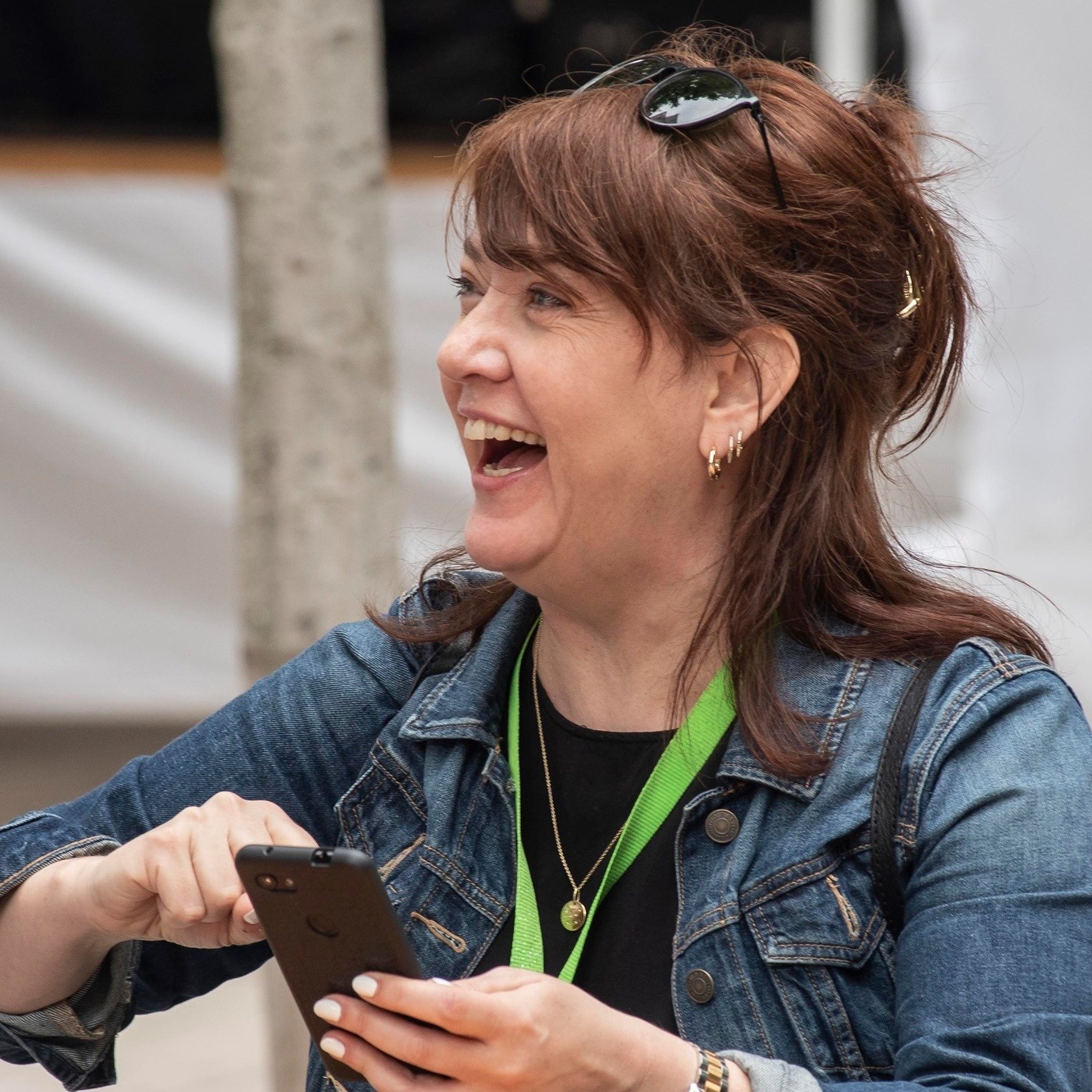As part of Vancouver Art Gallery's Fashion Fictions, Indigenous creations reach couture heights
Guest curator Amber-Dawn Bear Robe spotlights designers who are taking painstaking traditional techniques into the future of fashion
Caroline Monnet’s Echoes from a Near Future, 2022, inkjet print mounted on aluminum. Photo courtesy of the Artist
Vancouver Art Gallery presents Fashion Fictions until October 9
AT VANCOUVER ART GALLERY’S massive Fashion Fictions exhibit, some of North America’s most cutting-edge Indigenous designs stand side-by-side with Jun Takahashi’s intricate honeycomb-pleated skirts, Ronald van der Kemp’s swirling chain-link cascade of textile waste, and Rick Owens’s elaborate sculptural puffer capes.
That should not come as a surprise, as contributing curator Amber-Dawn Bear Robe, of Alberta’s Siksika Nation, says: “This is the original couture.”
What’s significant is that the exhibit’s complex creations by Indigenous designers like Caroline Monnet, Jamie Okuma, and Catherine Blackburn are not separated into a room of their own, but integrated into the larger themes of this expansive international survey of experimental design practices by the likes of Alexander McQueen, Issey Miyake, Moncler, Balmain, and Balenciaga.
“Fashion is much more important to me than just these pretty garments that have a season or that are in style,” says Bear Robe, an art historian and independent curator of Indigenous fashion-art shows at institutions like the Museum of Contemporary Native Art, and producer of the celebrated annual Indigenous fashion show for the Southwestern Association for Indian Arts (SWAIA).
“Being Native is political, and that goes hand-in-hand with fashion, and that's why I have this driving, urgent need to critically and academically look at that so it just doesn't become a fad,” she explains. “When you look at the history of American fashion, or the records of Indigenous fashion, it’s a footnote, still relegated as a curiosity. The power of representation in all fields is so important. And so what I do now is an extension of my art curation and art history.”
Bear Robe has devoted her career to celebrating the intense technical skill of designers whose artistry is on a level with any French couture house.
Amber-Dawn Bear Robe
In the Fashion Fictions exhibit, she points to Siksika artist Adrian Stimson’s Bumble Bee Regalia (Naamoi’stotoohsin), a white beekeepers’ suit emblazoned with 300 painstakingly sewn beaded bumble bees, finished with beaded gloves and moccasins. What makes the regalia (created in collaboration with Lucille Wright) even more meaningful is that the artist is referring back to an almost lost rite in Siksika (or Blackfoot) culture, in which children learn protocols, prepare for future societies, and dance like bees, creating swarms. “It's also addressing environmental awareness,” Bear Robe adds, “and how bees are so integral to the longterm future of this planet and us as human species.”
Elsewhere, Caroline Monnet frames the traditions of Anishinaabeg and French design in a decidedly futuristic way. Aïcha’s Regalia, created in 2022, is a wide-shoulder cape jacket employing traditional weaving with the use of reflective floor coating—raising an industrial material to fine conceptual, wearable art. She uses Plexiglas in similarly unexpected ways for the bulbous, shimmery-blue Catherine’s Coat (2002) that looks space-age, but integrates her matriarchal family designs. Both cloaks can be seen in her large-scale photograph Echoes from a Near Future, worn by some of the five Indigenous women leaders in an image that strikingly blurs the lines between fashion shoot, photo-conceptual art, and powerful political statement.
Bumble Bee Regalia (Naamoi’stotoohsin, by Adrian Stimson in collaboration with Lucille Wright—Payotapaihpiyakii.
Detail of Bumble Bee Regalia (Naamoi’stotoohsin)
The chic black-and-white vertical stripes on the bodice of Cree-Métis artist Jason Baerg’s Sunset Dress symbolize trees ascending into the sky-blue leather trim, while reds and yellows represent the Earth on the long, slit skirt below—a brilliant yellow horsehair belt and dangly earrings adding to the drama. There is even footwear, Barry Ace's Otter Moccasins integrating materials like otter pelt, velvet, porcupine bristles, copper wire, a vintage round circuit board, and electronic components, alluding to Anishinaabeg culture tapping new technologies for a promising future.
There are several more Indigenous designers and artists integrated into a show that features top names from fashion centres like Paris and Tokyo. “All of them are Indigenous people reinterpreting culture, historical and present day, Indigenous cultures today through a modern and contemporary lens,” Bear Robe stresses.
First Nations fashion is thriving around North America, including Indigenous Fashion Weeks in Toronto and Vancouver, not to mention the buzzy SWAIA show the Alberta-born Bear Robe stages in Santa Fe. But the curator stresses, “It’s not as if Native fashion is new,” pointing to veteran designers like Canada’s Dorothy Grant or Kanayu Rebecca Baker-Grenier. “It’s just a generational shift. I hate the word ‘resurgence’, but it’s a shift within art, and within consciousness.”
Barry Ace’s Nigik Makizinan (Otter Moccasins), 2014.
Curated by Stephanie Rebick, Fashion Fictions, overall, features designers who occupy “liminal spaces, using fashion as a means to unite seemingly disparate sentiments and to propose new possibilities for aesthetics, bodily forms and, more ambitiously, how we exist in the world,” according to its entry statement.
In the case of the Indigenous designers that Bear Robe has gathered as part of the show, they fit easily into the theme, operating fluidly between the past—in fact, the age-old—the present, and the future, integrating cutting-edge sustainability and technology while drawing on ancient, ancestral methods. They also live comfortably in the “liminal space” between art and fashion that this big, dazzling gallery show inhabits.
“Wearable art is kind of a category that gets high exposure in Europe and the general fashion world, but we’ve always been doing wearable fashion in terms of technological and engineering exploring, and the pushing of skills,” Bear Robe says. “For Indigenous people, there wasn't the separation between art and life and culture. We have always been wearing art.
“Indigenous designers don't have to look outside for inspiration,” she adds, pointing out the one thing that perhaps separates them from today’s hautest European runway names. “This is where we are. This is where we're from.”


















